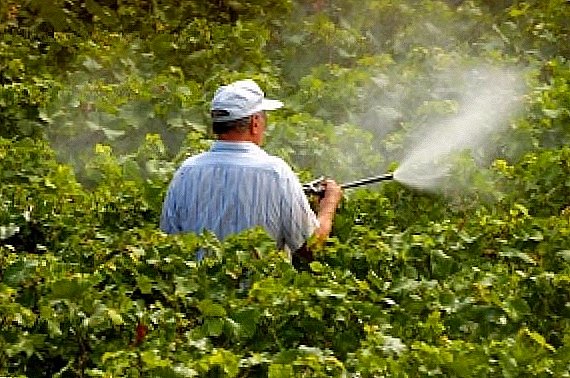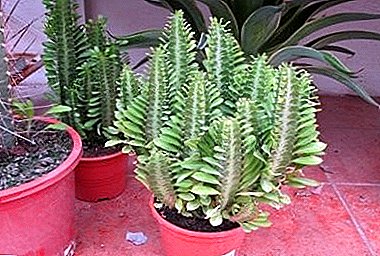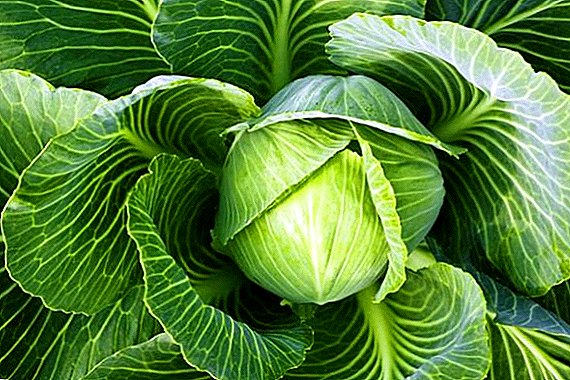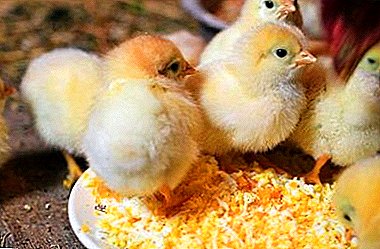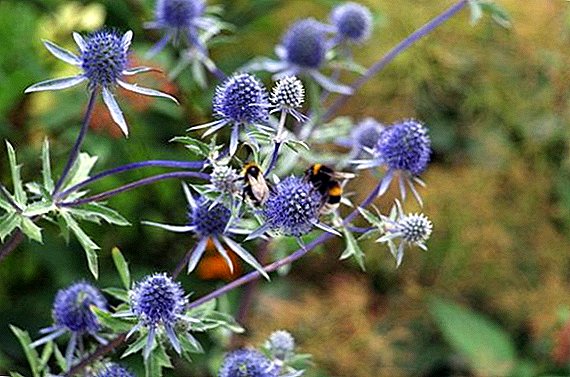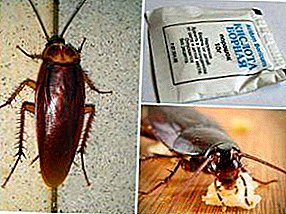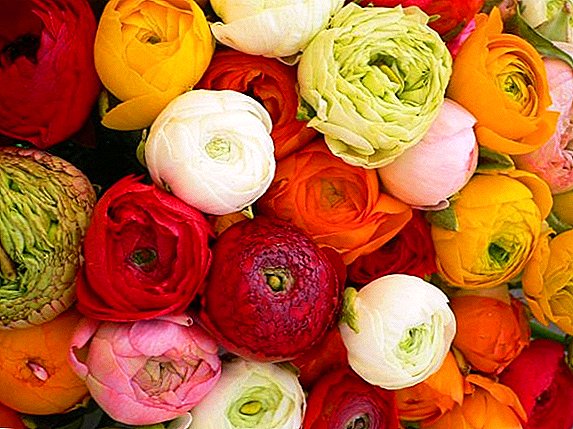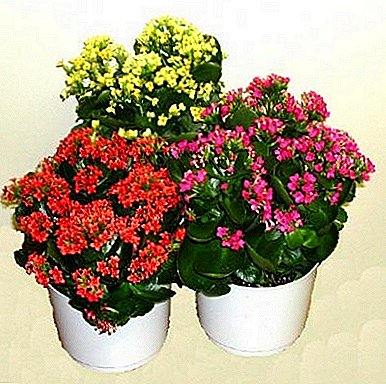
The beginning of its spread is a plant like Kalanchoetakes in Africa.
Today it is quite common and popular in Russia and around the world.
It is divided into two categories. These are the types of Kalanchoe, which are used for medicinal purposes and the so-called ornamental plants.
Worldwide there are more than 200 types of Kalanchoe.
All about planting, transplanting and caring for Kalanchoe at home, read below in the article.
Growing Kalanchoe
First you need to pay attention to the choice planting pot this plant. What pot is needed for Kalanchoe? It is advisable to choose a pot with small protrusions at the bottom, so that there is a small space between the bottom and bottom of the pot. This will help avoid stagnant moisture.
The next thing to prepare is priming. So, what kind of ground is needed for Kalanchoe?
Soil mixture made of three equal parts:
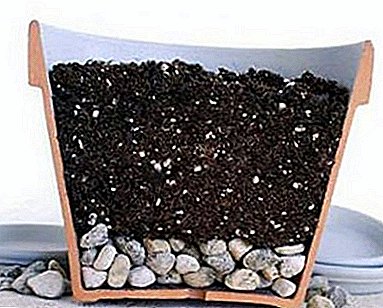 Humus;
Humus;- River sand;
- Leafy ground.
Which one the soil need for Kalanchoe? Suitable store soil for succulents with a small addition of sand.
Necessary soil composition for Kalanchoe:
- 3 parts of coarse sand or perlite;
- 2 pieces of sod land;
- 2 parts of humus (leafy ground);
- 2 parts peat.
The soil should not be heavy, good drainage is necessary.
As it can be broken bricks or, for example, pebbles.
After soil for flowering kalanchoe prepared, you need to plant the plant itself.
Water Kalanchoe recommended no more than two times a week. The soil should not dry out. There should not be excessive moisture, so the water from the pallet is periodically drained.
 Water for watering is first settled, its temperature should be at room temperature.
Water for watering is first settled, its temperature should be at room temperature.
Water carefully, so that the moisture does not fall on the stem, otherwise, it can rot.
With the onset of cold weather, and, until warming, watering Kalanchoe reduce. Humidity in the room should not be too high, the plant from this will begin to wither and lose its presentation.
For the normal functioning of the plant requires timely soil loosening and dressing about once a month. The temperature in the room should not be below 16 degrees.
Kalanchoe is a thermophilic plant. It will easily cope with summer heat with timely watering.
In the first year the plant blooms all winter. True, for this you need to regularly get rid of wilted flowers. But in order for the bloom to repeat next year, the flower needs rest in the autumn.
It must be removed away from the bright light and provide the so-called night period up to 14 hours. In the evening, cover the flower with a cloth to protect from light.
Growing kalanchoe at home does not require much effort, just need to comply with certain conditions.
A photo



Right pot for Kalanchoe a photo:

Breeding
How to multiply Kalanchoe multiplies at home?
- Cuttings. For these purposes, choose a beautiful, smooth Kalanchoe stalkits length should be about 8-10cm. From this depends largely on how it will look like an adult plant.
How to root Kalanchoe? It is cut from the mother plant and planted in a separate containerfilled with sand. Sand pre-moistened.
The leaves that are located at the bottom of the stem should be as close as possible to the ground surface. After landing, the stalk is covered with a transparent glass.
After reproduction of Kalanchoe cuttings, the young plant begins to create its root system within a week after transplantation. And in half a year, its blooming is quite likely.
When the Kalanchoe starts to take roots, it is recommended to pinch it periodically.This provokes the growth of additional buds and the formation of a lush, neat plant.
- Sheet of paper. How to grow Kalanchoe from a leaf? To reproduce Kalanchoe leaf should be in late spring - early summer. For this, a leaf is separated from the plant and placed in water in order for it to take root.
How to plant a leaf or how to propagate the Kalanchoe leaf? You can immediately pre-moistened sand. What is remarkable, even fallen leaves can take root and take root.
- Children. On the edge of the leaves of some varieties of Kalanchoe (as they are also called, viviparous) babies are formed - small brood buds.
Thus, these buds fall off over time, give roots, and then the daughter ones grow right next to the main plant. They can be almost immediately transplanted into a separate container in the ready soil for Kalanchoe.
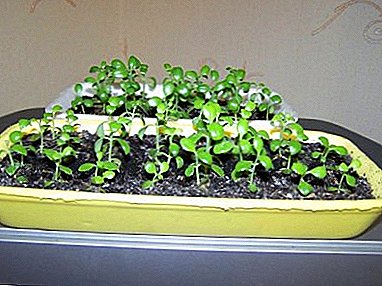 Seeds. Propagated kalanchoe seeds most often used when they want to get exotic species of this plant, which are difficult to get for sale in adult condition.
Seeds. Propagated kalanchoe seeds most often used when they want to get exotic species of this plant, which are difficult to get for sale in adult condition.The soil for sowing seeds is sandy peat.. With the onset of spring, the material for planting is evenly distributed on the surface of the soil and lightly pressed by hand.
Capacity with seeding cover glass or a transparent film and put in a bright place.
In this case, the temperature in the room should not fall lower than 20 degrees. To moisten the soil using pulvelizer. You need to constantly ensure that the soil is constantly hydrated.
After the first shoots glass or film clean. From weak and diseased shoots get rid of, and strong and healthy plants - transplanted into pots.
- Air spines. How to dilute Kalanchoe using air roots? On the cuttings of some species of Kalanchoe appear air roots. This stalk with aerial roots can be cut and planted in a separate container.
The material will take root very quickly and very soon a healthy adult plant will turn out.
Reproduction of decorative Kalanchoe
 How to propagate blooming Kalanchoe at home? If the length of daylight hours is less than 12 hours, the reproduction of this plant is better to postpone or additionally use a fluorescent lamp.
How to propagate blooming Kalanchoe at home? If the length of daylight hours is less than 12 hours, the reproduction of this plant is better to postpone or additionally use a fluorescent lamp.
Air temperature during the daytime, it should warm up to a maximum of 24 degrees, the lower limit of the temperature at night should be 18 degrees.
When sowing Kalanchoe seeds, the temperature should be maintained within 21 - 24 degrees. Crops should be aired regularly..
Landing
How to plant a process and how to grow a Kalanchoe from a process at home? You need to plant a Kalanchoe process after it has good, developed roots. After that it needs to be watered properly.
And to accelerate the process of development and the formation of an adult plant, you need to create a greenhouse effect. For this process, cover the glass jar.
Transfer
How and when can the Kalanchoe be transplanted? at home? Transplant Kalanchoe at home they do once a year, every spring. This should be done strictly after flowering.
 The need for transplantation is that the plant develops, the root system grows and ceases to fit in the pot, it becomes small.
The need for transplantation is that the plant develops, the root system grows and ceases to fit in the pot, it becomes small.
New pot must be acquired larger in sizethan the previous one. New container is washed with soap and rinsed with potassium permanganate.
How to transplant or plant a flowering kalanchoe in another pot? Before you begin to transplant, the flower is thoroughly watered and pulled out of the pot.
If the plant is not too large, shake off excess soil from the roots. If there are diseased roots, they are cut. We must act extremely careful not to damage healthy roots.
Is it possible to replant Kalanchoe in the fall? Not. It is necessary to replant Kalanchoe at the end of spring, when the plant is in the most active phase.
At the bottom of the pot pour drainage, then a layer of sand and a small layer of earth. After that, the plant is placed in a pot and sprinkled with earth so that there are no roots on the surface. Then, watering follows. If necessary, sprinkle some more earth.
You can't call Kalanchoe a capricious plant. Its cultivation will not create big problems for an experienced gardener or an amateur.
The main thing is to follow simple recommendations, and the plant will delight its owner with a healthy look and long flowering.


 Humus;
Humus; Seeds. Propagated kalanchoe seeds most often used when they want to get exotic species of this plant, which are difficult to get for sale in adult condition.
Seeds. Propagated kalanchoe seeds most often used when they want to get exotic species of this plant, which are difficult to get for sale in adult condition.

